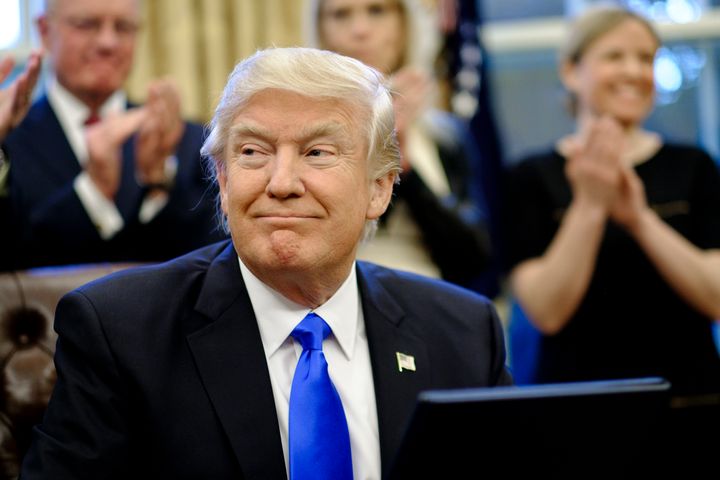
On Monday, President Donald Trump proclaimed “I call my own shots” amid suggestions his administration is led by White House senior advisor Stephen Bannon, not him.
In a tweet, Trump said his decision-making is “largely based on an accumulation of data” - but a handful of recent statements suggest this isn’t always the case.
Here are five times Donald Trump definitely didn’t base his decisions on an “accumulation of data” (well not data that’s accurate, anyway).
1. Widespread voter fraud
Trump has repeatedly lied about the scale of widespread voting fraud in the US. His claims have consistently been debunked by electoral experts who say his touted figure of “three million illegal votes” is demonstrably false.
What’s more, Trump’s favoured source for voter fraud stats was himself registered to vote in three states, a practice Trump claims is “illegal” but which is in fact perfectly legit.
2. Inauguration crowd size
President Trump used his first hours in the White House to lambast “FAKE NEWS!” reports about the size of his inauguration crowd.
There is evidence that the event drew a smaller physical crowd and lower television viewership than past inaugurations - while fact-checkers have cast doubt on whether it was the most-viewed in total.
Nonetheless, Trump ordered his Press Secretary Sean Spicer to launch an unexpected, deep-throated attack on the media over the issue. Trump’s White House has consistently lied about the size of the crowd.
3. Ford Motors relocation
Last month, Trump claimed credit for car manufacturer Ford scrapping a planned factory in Mexico and creating 700 new jobs in the US.
Despite having held a face-to-face meeting with Trump, Ford Motors CEO Mark Fields said instead that market demand was the reason for the business’s decision.
4. Australian refugees
The deal between the Obama administration and Australia related to 1,250 refugees on Manus Island.
There were not “thousands” of them, nor were they “illegal immigrants”.
5. Iranian deal
Iran was not “on its last legs and ready to collapse” before the 2015 Iranian nuclear deal, GDP had grown four percent the year before the deal.
Iran was not paid $150m, but had assets totalling a lower amount unfrozen. Then Secretary of State John Kerry said Iran would benefit by around $55m.
It comes after Trump was mocked over reports his team can’t work the White House light switches.
